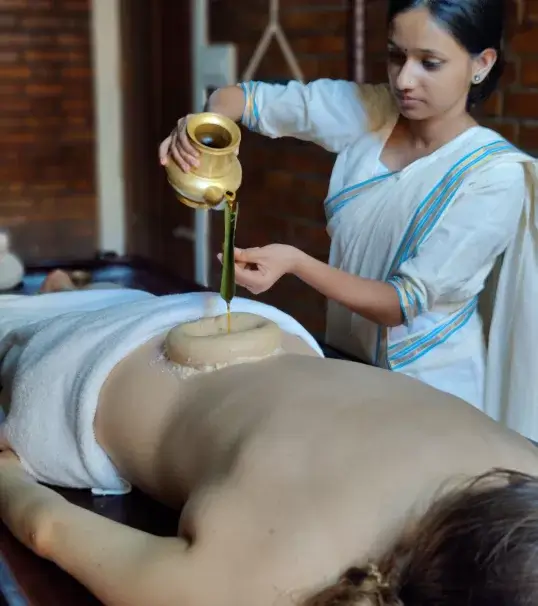


Ayurveda Panchakarma refers to a set of treatment modalities which aim to clean up the body. In today’s busy world where it becomes difficult to find even some good air to breathe, such periodic detox treatments are becoming a necessity of the entire world.
When we talk of Ayurveda Panchakarma, the most familiar treatment that comes to most minds would be the Virechana treatment. This refers to “therapeutic purgation”. Being one of the most effective Panchakarma treatment modality, Virechana has become a prior choice among the health seekers throughout the globe. Here, oral medications are given and the person gets loose toilets.
But, this is just one visible side of Virechana. Just getting some loose toilets is not all about Virechana. Being one among the Panchakarma procedures, Virechana requires a lot of preparations which aims at bringing the vitiated doshas from various parts of your body to move in to the Koshta (Alimentary Canal). These preparations should be done strictly under the direct supervision and regular monitoring of an Ayurveda Doctor.

Preparations (Purvakarma) of Virechana includes assessment of your Koshta (nature of Alimentary tract), Agni (power of Digestion), Prakriti (Body nature), Vikriti (Imbalances), Bala (Strength), and a lot more (including the climatic conditions). Depending on all these factors, a Doctor can decide the nature and extent of the preparatory procedures that are required in each case. The treating Physician will regularly assess the impact of the preparatory procedures on your body, so as to plan the category of medicines that is to be chosen for causing Virechana (therapeutic purgation).
The day of Virechana is also crucial. An experienced Medical Team should be always available to provide adequate care and guidance throughout the day. After successful completion of the procedure, specially prepared dishes are to be taken as per the advice given by the Medical Team.
The real complication residing in the implementation of the procedure is that; all these steps – starting from the Purvakarma, the medicine administration, till the administration of the first food after the Virechana, everything is “customized”. The plan made for one person might be entirely different from the others. They all depend on the stages of Dosha imbalance of each individual!
Virechana is a therapeutic detox treatment in Ayurveda that gently cleanses the body by eliminating toxins (especially vitiated Pitha dosha) through controlled purgation. The duration of the treatment is personalized. An Ayurvedic doctor will assess your digestive health and overall condition to decide the exact number of days, which typically ranges between 12 to 18 days.
Virechana is a step-by-step detox process in Ayurveda. It usually begins with Snehana (Oleation), where the person takes medicated ghee for 3 to 7 days to loosen toxins in the body. External oleation through full-body oil massages are also done to enhance the effect of the procedure. This is followed by Swedana (Fomentation), a type of steam therapy to further prepare the body. Once ready, Virechana (controlled purging) is performed to help flush out deep-seated toxins. After the detox, a special recovery diet called Samsarjana Karma is followed to help the digestive system gradually return to normal.
Virechana is categorized into four main types, each based on the strength and purpose of the cleansing. Anulomana uses mild herbs to regulate bowel movement gently. Sramsana involves natural laxatives to promote detox in a balanced way. Bhedana is a stronger method using purgatives for deep cleansing, while Rechana also uses purgatives but with a more general detox focus. The choice depends on the individual’s health, strength, and specific condition, as assessed by the Ayurvedic doctor.
During Virechana, the diet is kept light, warm, and easy to digest to support the cleansing process. Foods like rice gruel (Peya), green gram soup, and simple khichdi are commonly recommended. Spices and heavy, oily, or processed foods are strictly avoided. After the main detox, the diet is gradually adjusted in stages to help the digestive system regain its strength.
The ideal Panchakarma therapy recommended in Ayurveda to eliminate excessively vitiated pitha dosha is Virechana (purgation). To balance excess Pitta, it’s best to eat lukewarm foods having a cooling property, and light foods. Choose foods that are slightly nourishing but not too heavy dishes. Avoid spicy, oily, and overly acidic and sour foods. Especially avoid all fermented, spicy and sharp foods in the evenings.